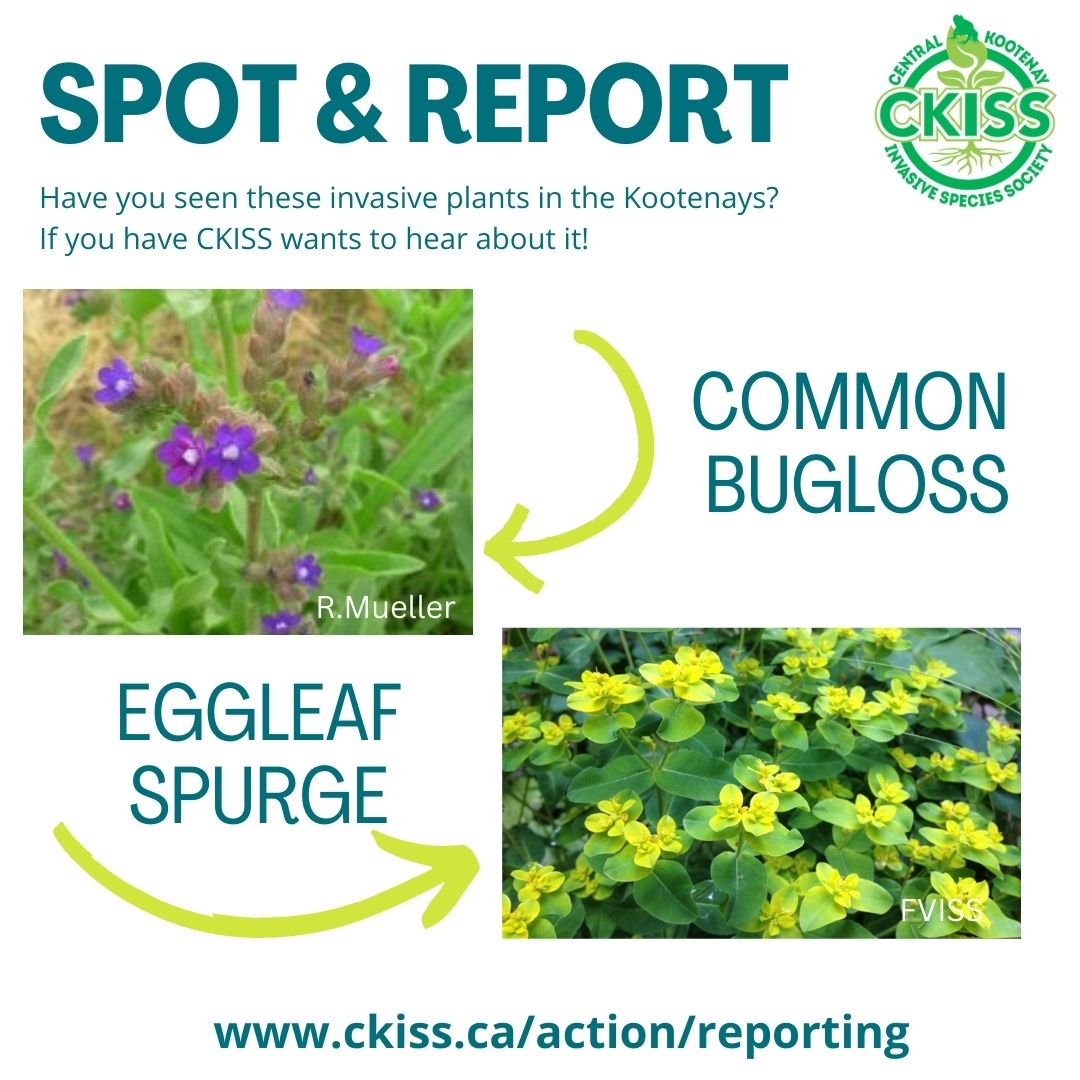Common bugloss (Anchusa officinalis) has been spotted for the first time in the CKISS region. The invasive plant was discovered in the Yahk/Kitchener area and has since been treated. The adjacent areas have been surveyed to look for more infestations. The plant is known to have impacts on the agriculture industry since it can reduce crop yields.
Common bugloss is not known in other parts of our region, and we need your help keeping it that way! Please keep your eyes open for this plant. To learn how to ID common bugloss and to find out more about it’s habitat, how it reproduces and the impacts to B.C. click here.
Another new invader to keep your eyes open for is eggleaf spurge (Euphorbia oblongata). It has recently been confirmed in B.C. for the first time on southern Vancouver Island. Additional new reports of this species from Vancouver Island and Metro Vancouver are being verified. The invasive spurge inhibits the growth of nearby native plants and its sap can irritate skin.
Eggleaf spurge is considered an Early Detection Rapid Response species in B.C. These invasive plants are the highest priority for planned control programs with eradication being the goal. The Ministry of Forests Invasive Plant Program is working with impacted land occupiers to contain and remove all propagules (reproductive plant parts) prior to seed dispersal and will be developing and implementing response plans
We are asking the public to keep an eye out for these plants in the Kootenays and throughout the province and to report any suspected sightings.
What can you do to help?
- Learn how to identify common bugloss & eggleaf spurge
- Report sighting to Report Invasives or CKISS.
- BePlantWise: choose non-invasive plants for your garden
- Please avoid collecting plant samples or walking through confirmed eggleaf spurge and common bugloss sites, as these activities can result in further spread.
What does Eggleaf spurge look like?
- Upright perennial forb grows to 1 metre tall; multiple stems grow from a woody, branched taproot.
- Stems covered in fine white hairs and branch at the tip, turning red as plant matures (July to October).
- Flower clusters are yellow and inconspicuous, occurring at terminal tips (March to August). Each cluster has yellow bracts at the base, then a whorl of yellowish green leaves.
- Leaves oblong, hairless (up to 6.5 cm long) with finely toothed margins and distinct midvein. Leaves alternate up single stem, with leaf whorl at base of flowering stems.
- Seeds brown and smooth are held in 3‐lobed capsules and ejected when ripe. Green seed capsules are waxy and sticky.
Impacts of Eggleaf spurge
- Eggleaf spurge is inedible to wildlife and inhibits the growth of nearby plants, creating bare ground under established infestations.
- The sap of Eggleaf spurge can cause skin irritation, gloves should be worn when handling the plant.
- Species commonly mistaken for Eggleaf spurge
- Cypress spurge,
- Myrtle spurge,
- Leafy spurge and Summer spurge.
**Cypress and Myrtle spurge are widely cultivated as ornamentals and there are sites where these species are starting to spread onto public lands from private gardens. Leafy spurge is present in southern B.C.**
Resources:
- The province of B.C. have developed an Eggleaf spurge Species Alert sheet
- Fraser Valley Invasive Species Society: Eggleaf spurge species profile.

